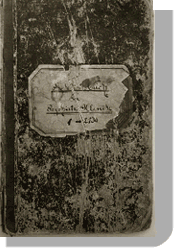
ALZHEIMER'S DISEASE
 |
||||||||||||||||||||||||||||||
| Seconding Alzheimer's Claim to Fame | ||||||||||||||||||||||||||||||
"Mercury Video on Alzheimer's"Some scrounging in the basements of the University of Munich has turned up brain samples from the first patient known to be correctly diagnosed with Alzheimer's disease. In this month's issue of Neurogenetics, German psychiatrists describe 90-year-old slides of brain tissue from a patient known as Johann F. They speculate that this was the case that got the name of German physician Alois Alzheimer into the medical textbooks.Alzheimer had described an earlier case of dementia, in a patient called Auguste D.Last year, however, a team from the University of Frankfurt in Germany cast doubt on whether she really suffered from what is now known as Alzheimer's disease when they rediscovered her medical file. No tissue samples remained, but the autopsy report described hardening of the smaller cerebral arteries--a condition that now precludes a diagnosis of Alzheimer's. Later in the same year, 1907, Alzheimer treated Johann F., who also showed signs of dementia and died 3 years later. For decades, his records remained lost. Now an extensive search in the basements of the University of Munich has turned up what are "beyond a reasonable doubt" sections from Johann F.'s brain, says Manuel Graeber of the Max Planck Institute of Psychiatry, who led the search. To check their authenticity, Graeber had the Bavarian State Bureau of Criminal Investigation confirm that the ink on the slides was over 80 years old. The clinic's autopsy book, which was also rediscovered, listed the cause of death: "Alzheimer'sche Krankheit," or Alzheimer's disease. Tissue analysis has confirmed the diagnosis, but it turns out that even this second patient didn't have a typical case of the disease: Johann F. suffered from the less common "plaque only" variant. He was also missing the Alzheimer's susceptibility allele apo4, a well-established variant of a gene for apolipoprotein E carried by approximately two out of three patients. Graeber also speculates that the case of Johann F. convinced Alzheimer's boss Emil Kraepelin to name the affliction "Alzheimer's disease" in 1910--diagnosed by plaques in the brain--in the 8th edition of his textbook of psychiatry. "Kraepelin and Alzheimer were very close friends. This patient was Alzheimer's personal case, but it's very likely he was seen by both of them," Graeber says. When Johann F. died shortly after the book's publication, Alzheimer wrote the name of his disease in the autopsy book.
Autopsy book with Alzheimer's first correct diagnosis in 1910.
© 1997 by the American Association for the Advancement of Science
|
||||||||||||||||||||||||||||||
 |
||||||||||||||||||||||||||||||
